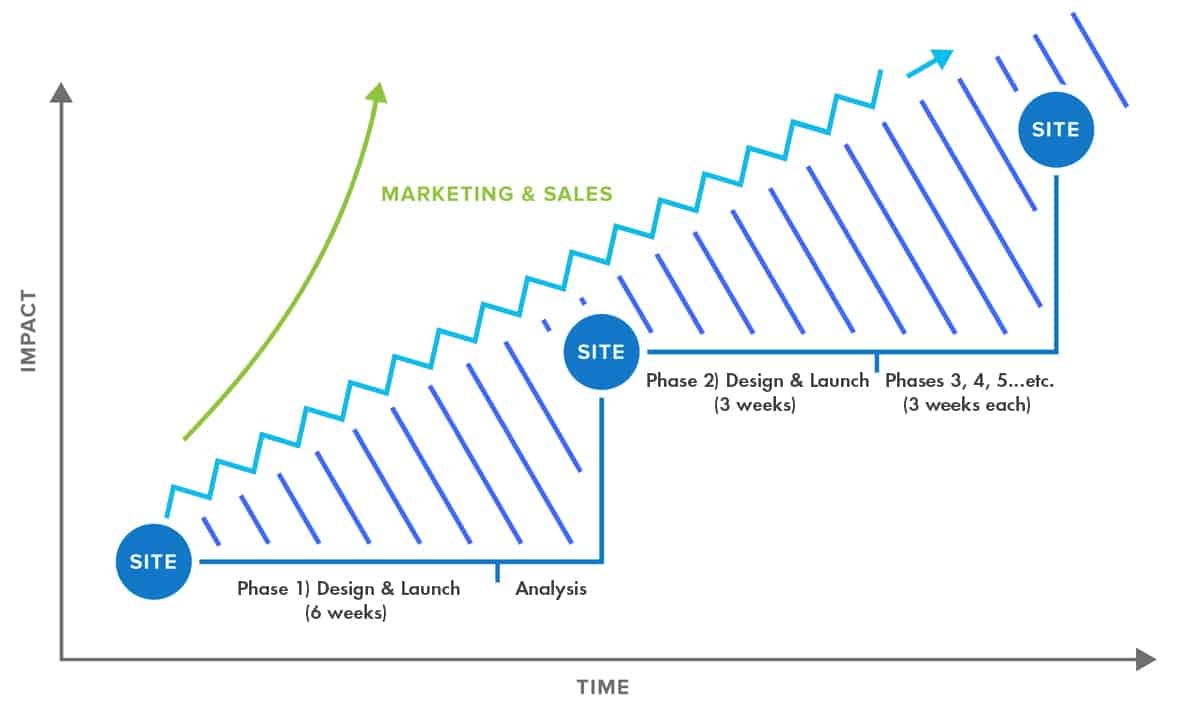Website development can take months of strategy, design, fine-tuning and implementation, not to mention a lot of quality-assurance testing. Essentially, you take all of your old content, look it over, weigh and measure it and change it. You look at the imagery you have, and decide what to keep, what to toss and what needs to be created to fill the new voids. You notice information gaps, as your products or services have changed since the last time you created a website, and you start to shift things around. What starts as a three- to four-month process slowly creeps into a six-month, then an eight-month, to a one-year project.
You fight through and finally hit the “launch” button. But, you’re over budget, the site is six to eight months late, and that’s not the worst part: Now, you hate your new website. Small things on the site that you may have liked at the start of this process now seem stale. Perhaps it’s because you’ve been staring at the same homepage slider for nine months. You know it will be new and fresh to the target audience, and yet because you’ve spent so much time with it, that happy couple you thought sold your product so well a year ago is now mocking you.
Welcome to traditional website building. Sound like fun?
We don’t like it, either. And, quite frankly, there’s no good reason for it.
Instead of trying to recreate the wheel, our approach to website development looks at helping you to fix a few of the spokes at a time, so you never have to detach it from the cart. Chances are, you already have a website. We’d start by looking at the analytics of that site and figuring out where your web visitors spend most of their time. We know they are obviously going to the homepage. But, where are they going from there? Are you seeing a handful of page visits as the majority of your traffic? Most sites do—in fact, there’s usually a ‘Top 5’ set of pages, with the rest showing decreasing percentages of use.
If we build a website based on simply those five pages, and move the rest of your site into a subdomain, we can lead the customers through a new site, and then allow them to traverse to your old site as they continue to drill down. If they are making it to the old site, then you have them interested enough, and the transition shouldn’t be too drastic; especially if you have a mechanism in place to let them know that they are visiting an older section of the site.

Instead of working forever for perfection, you get that fresh new site up pretty quickly, and then work to bring your secondary content to this new site. You don’t wait for everything to be complete, and then release it to the world…if and when that day finally comes.
Waiting for perfection causes analysis paralysis, perfection is the enemy of the good; pick your colloquialism. At the end of the day, your website should provide visitors with the best experience you can, and that means getting them the newest content as quickly as possible.
This type of website development, Growth Driven Design (GDD), does also require a lot of work—teamwork, that is, between you and the web team you hire. Think of it as a partnership, but with no strings attached. You end up with a far superior product, a site you can literally walk away with, and fewer interruptions for your users. Now, that’s a start to a beautiful relationship.
So, what are you waiting for? Contact us today, so you can get your new website up and running now.